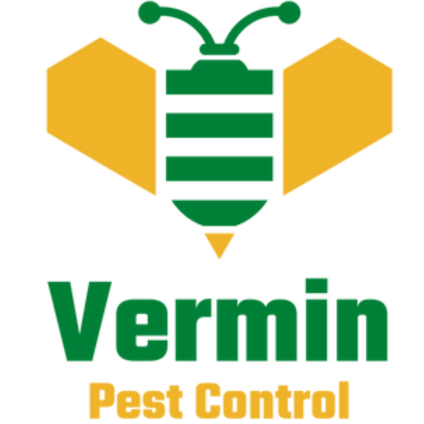Pests have been the farmer’s adversary since the first seeds were planted. From insects that devour crops to fungi that rot harvests, controlling these threats is essential to food production. For large-scale farming, the question often comes down to a choice between organic pest control and chemical pest control — two very different approaches with their own advantages, challenges, and impacts.
With growing consumer demand for healthier produce and environmentally friendly practices, organic pest control has been gaining traction. Yet, chemical methods remain the dominant force in large-scale agriculture because of their speed, efficiency, and proven results. So which method is actually more effective for large-scale farming? Let’s break it down.
Understanding the Two Approaches
Before comparing them, it’s important to understand what each method entails.
Organic Pest Control
Organic pest control uses natural substances and biological methods to manage pest populations. This can include:
- Biological control agents — Beneficial insects like ladybugs or parasitic wasps that prey on harmful pests.
- Botanical pesticides — Derived from plants (e.g., neem oil, pyrethrin from chrysanthemum flowers).
- Microbial pesticides — Bacteria, fungi, or viruses that target specific pests (e.g., Bacillus thuringiensis for caterpillars).
- Cultural practices — Crop rotation, intercropping, and soil management to deter pests naturally.
Chemical Pest Control
Chemical pest control relies on synthetic pesticides, herbicides, and fungicides to eliminate pests quickly and effectively. These include:
- Insecticides — Kill or repel insects (e.g., organophosphates, pyrethroids).
- Herbicides — Target unwanted plants and weeds.
- Fungicides — Prevent or treat fungal infections.
Chemicals can be broad-spectrum (killing many pest types) or targeted (affecting specific organisms).
Effectiveness in Large-Scale Farming
When we talk about “effectiveness” in large-scale farming, we need to consider several factors: speed of action, cost, labor requirements, crop yield impact, environmental effects, and long-term sustainability.
1. Speed of Pest Control
- Chemical: Chemicals work fast. In many cases, pests begin dying within hours, making them ideal for emergency infestations.
- Organic: Organic methods often take longer. For example, releasing beneficial insects may take weeks to impact pest populations significantly.
Winner: Chemical — When immediate results are critical.
2. Coverage Area and Scalability
- Chemical: Easy to apply over hundreds or thousands of acres with machinery like crop dusters or boom sprayers.
- Organic: Biological methods require more hands-on application and careful monitoring, which can be challenging for massive acreage.
Winner: Chemical — Better suited for vast farmlands with consistent pest pressures.
3. Cost Efficiency
- Chemical: Often cheaper in the short term due to lower labor needs and faster results. However, repeated use can lead to pest resistance, requiring higher doses or new chemicals — which increases costs over time.
- Organic: Can be more expensive upfront due to higher labor costs, smaller-scale application, and more frequent treatments. But it may save money in the long run by avoiding pesticide resistance and maintaining soil health.
Winner: Tie — Chemicals win short-term, organics win in long-term soil and resistance management.
4. Impact on Crop Yield
- Chemical: Can protect crops more aggressively, leading to higher immediate yields. However, overuse can harm beneficial insects and soil microorganisms, reducing productivity in the long run.
- Organic: Often leads to slightly lower yields initially but supports long-term fertility and soil health, which sustains productivity over decades.
Winner: Depends on time frame — Chemicals boost short-term yields; organics safeguard long-term output.
5. Environmental and Health Impacts
- Chemical: Risk of water contamination, harm to pollinators, and residue on crops. Long-term exposure can affect human and animal health.
- Organic: Lower risk of toxic runoff, safer for beneficial insects, pollinators, and farm workers. However, organic doesn’t mean “risk-free” — some natural pesticides can still harm non-target species.
Winner: Organic — Better for environmental sustainability and worker safety.
6. Resistance Development
- Chemical: Pests can develop resistance quickly, leading to “super pests” that are harder to control.
- Organic: Less prone to resistance due to varied and ecosystem-based approaches, although not immune.
Winner: Organic — More sustainable in avoiding resistant pest populations.
Case Studies in Large-Scale Farming
Chemical Success: Cotton Farming in the U.S.
In large cotton-growing states like Texas, synthetic insecticides have been essential in controlling bollworms and other pests that could devastate yields. Without them, large-scale cotton production at current volumes would be nearly impossible.
Organic Success: Vineyards in California
Some large vineyards have transitioned to integrated pest management (IPM) with a focus on organic methods — like introducing predatory mites and using pheromone traps. While yields are slightly lower, the reduced chemical use helps market their wine as eco-friendly, appealing to a growing consumer base.
The Role of Integrated Pest Management (IPM)
The debate isn’t always organic vs. chemical. Many large-scale farmers are finding success with IPM, which combines the best of both worlds:
- Monitoring pest populations and only using chemicals when absolutely necessary.
- Using biological control and cultural practices to keep pest levels low.
- Rotating crops and pesticide types to prevent resistance.
IPM helps reduce chemical dependency while maintaining large-scale efficiency.
Which Should Large-Scale Farmers Choose?
- If the priority is immediate, large-scale pest eradication to save crops from severe infestations: Chemical pest control is more effective.
- If the priority is long-term soil health, environmental sustainability, and reducing resistance: Organic pest control (or IPM with organic methods) is the better choice.
For most modern farms, a hybrid approach — chemicals as a last resort, organics and preventive methods as the foundation — delivers the best balance of efficiency, cost control, and sustainability.





Add Comment